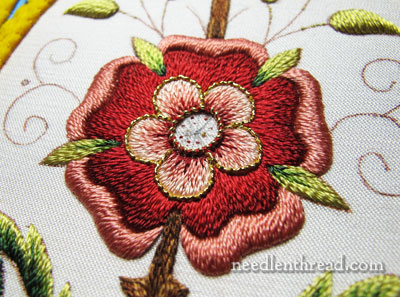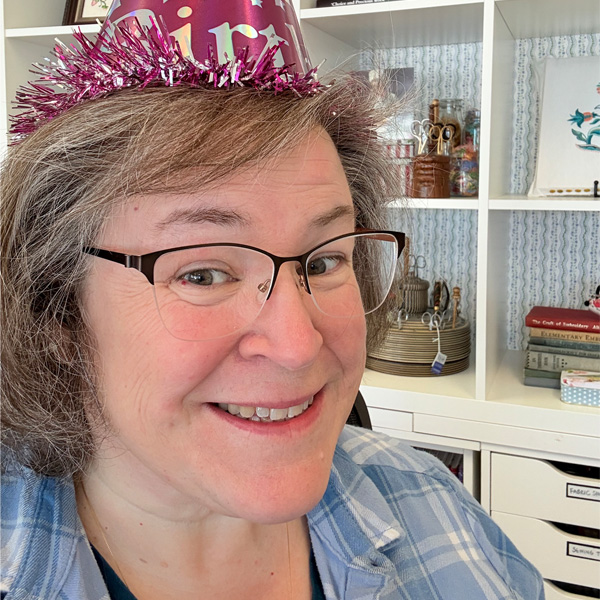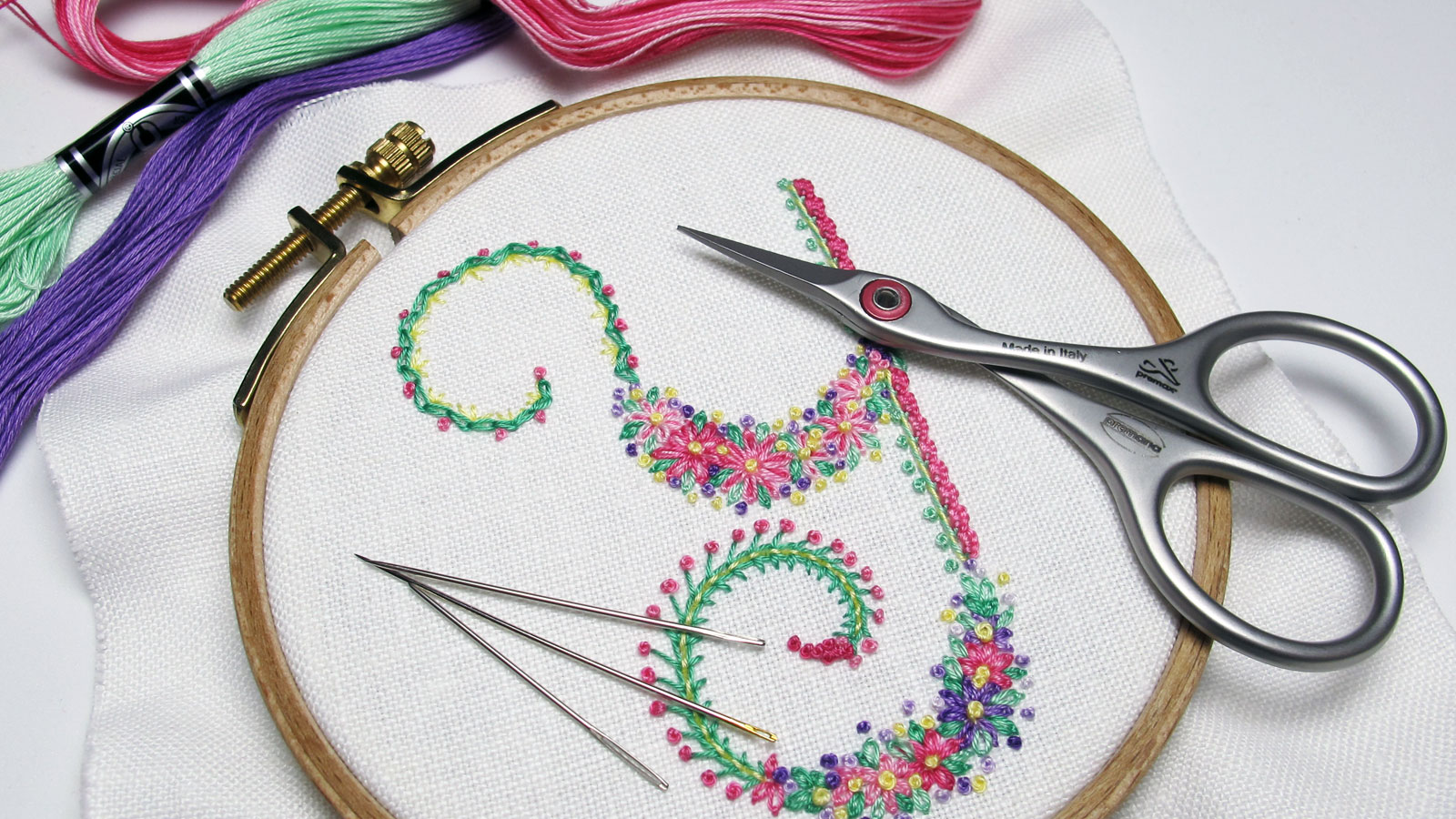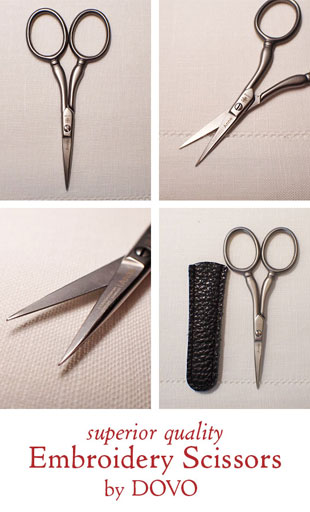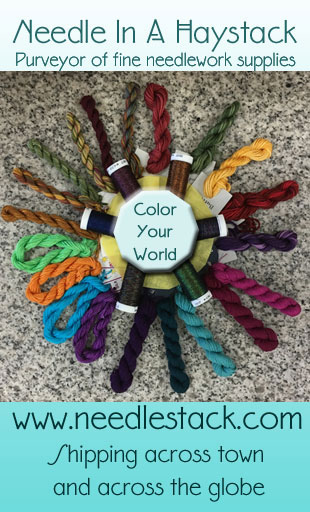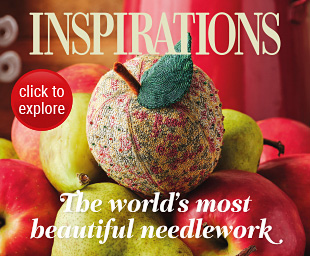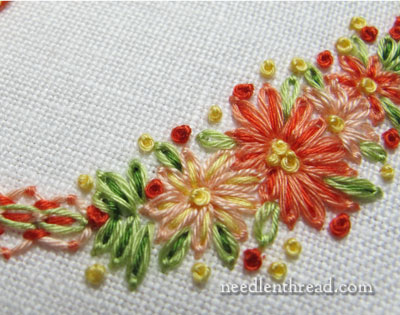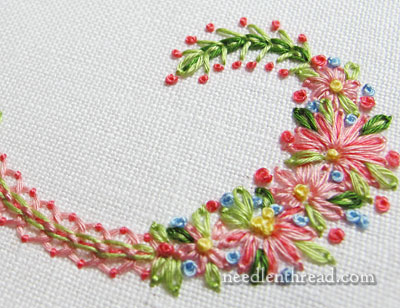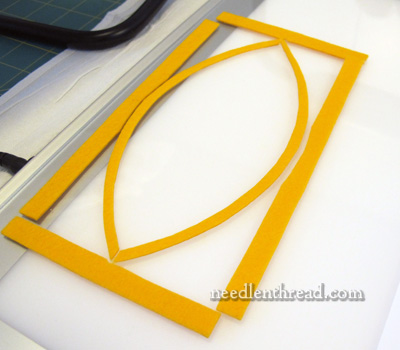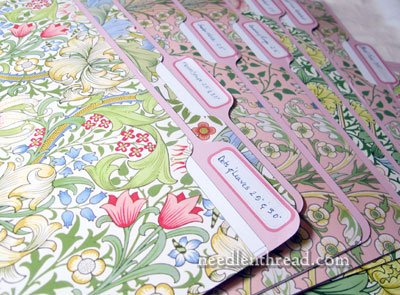It’s been a little too long since we visited the Mission Rose project. Last time we looked at it, we were discussing the question of whether or not it was a mistake to appliqué blue silk into the corners around the central marquise shape.
Opinions were really divided on the addition of the blue! I’m glad, because that means that you feel comfortable expressing your needlework opinions on Needle ‘n Thread, which contributes to that sense of community that a blog is all about – we can discuss needlework things, and we can even have divergent views on this or that approach, but we still go forward.
In the long run, the whole Final Decision thing still falls back on me. Darn! It’s one of those situations where you can please some of the people most of the time, and most of the people some of the time, but you can’t please all the people all the time. Right?
But I am going to ask those who don’t really like the blue – those of you who are scratching your heads, raising your eyebrows, and wondering about my state of mental health – one big favor…
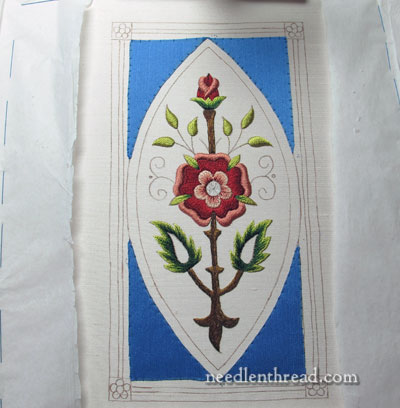 Continue reading “Mission Rose: Applique Finished! What’s Next?”
Continue reading “Mission Rose: Applique Finished! What’s Next?”
